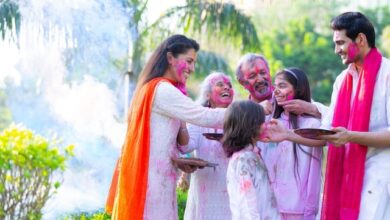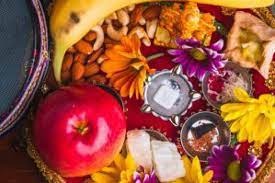Exclusive: Neuma, Karan Johar’s eatery, is hosting a delicious celebration of South Indian flavors
Neuma, the elegant restaurant owned by Karan Johar, has evolved into a hub for real South Indian cuisine. The eatery, which is located in a 19th-century colonial home in Colaba, teamed up with chefs Sandeep Sreedharan and Sophie Radtke to create their recently opened “Southern Odyssey” pop-up.

Following their success in Austria, Hungary, Thailand, and Germany, the culinary team is now tempting Mumbai’s palette with southern coastal innovations. We wonder what makes the meal special. “The essence of these pop-ups is putting South Indian flavors on the global map,” says Sandeep.
With more than ten years of experience in South Indian cooking, his mission is to democratize comfort food by making it more widely available. His girlfriend, Sophie, pays him a complement by incorporating her Austrian cooking technique without overpowering the flavors with spices.
Beginning in Mahe, in North Kerala, the chefs have assembled classic dishes from Goa, Tamil Nadu, and Karnataka cuisines, topped with flavor profiles reminiscent of France and Italy. This pop-up is a voyage of flavors from across the world, with dishes like Carpaccio from Italy and Kerala’s street cuisine, Pazham Puri (banana fritters).
While we start sampling, Sandeep regales us with a story from his early years. “My mother used to bring jackfruit cutlets for lunch while I was in school, which had a lasting impression on my palate. Since cutlets were such a big part of my childhood, I knew I had to include them when I was choosing the menu for our pop-up.
This was, of course, our signal to sample the meal. After taking a mouthful, we were engrossed in a string of delectable scenes. The cutlet had a somewhat crunchy exterior and a soft inside. Inquiring about the planning, we ask Sandeep to share his top trick. “Adding jackfruit pulp to potatoes and cooking until lightly crisp enhances the flavor of the dish,” he murmurs.
The two chefs think that the secret to delicious food is simplicity. They have imbued the staple spices found in Keralan kitchens—roasted coriander, red chilies, and black pepper—with this philosophy. Fundamental, in a literal sense! The way these spices are ground (for the ideal consistency) and roasted (for the ideal color) sets them apart in use.
Hand-pounding masalas by hand is a customary cooking method in Kerala, renowned for its authenticity and rich flavor. As we chat, we are transported back in time to Sreedharan’s hometown, where ladies utilize big wooden pestles and mortars in a similar manner to how musicians use their instruments. To release the vital scents, they pound herbs and spices in a rhythmic symphony on the meadows of Mahe.
This thumping rhythm takes us back to Neuma, where the music is grooving to a tropical beat. Neuma is the Latin word meaning “spirit.” The luxurious European house personifies an infectious ambiance that transcends tangible worlds, embodying the spirit of its meaning. the sort that has an incredible flavor combination, euphoria, and kinesis.
Next on the spread, in relation to cuisine, was Doodhi Carpaccio. We first ate the food right before our eyes. Our taste senses were in full bloom after receiving a generous portion of coconut-yoghurt dressing garnished with pepper, olive oil, and red chilies. When we tasted it, the flavor of the okra below came through together with the smooth, paper-thin doodhi slices, making us want to keep eating until there were no more crumbs.
One of the menu’s innovative dishes, according to Sophie, is the Doodhi Carpaccio, which combines European cooking techniques with Indian flavors. An Italian appetizer known as carpaccio is composed of delicately crushed meat or fish and is often served fresh. The culinary team experimented with the recipe for Southern Odyssey, creating a delicious vegan variation using milk dressing.
Before we knew it could be any better, the Rambutan with Creamy Fermented Cashew Cheese appeared. The tropical fruit known as rambutan, which is native to Southeast Asia, is related to the lychee family (without the added spikes). Sandeep’s culinary skill was on full display in this vegan meal, which he created while experimenting with Goan cashews. As we took our last bite, we couldn’t help but feel grateful for the chef’s presence.
At this point, we realize how little we really know about the depths of flavor found along the shore. Sandeep reassures us by explaining how, in spite of its popularity, South Indian food is still underrepresented in European countries. Sandeep says, “Forget about coastal flavors—even the pulsating taste of the iconic butter chicken or biryani does not echo in those regions.”
This highlights the fundamental issue with coastal food, which is that it is well-known to be very inexpensive globally! People often think that South Indian cuisine consists of dosa, parotta-beef-fry, idli sambhar, and similar dishes when you mention it. Because it doesn’t seem like an expensive eating experience, consumers dismiss it.
For example, you won’t purchase the fish moilee if I charge Rs 50 for it. However, for Rs 500, the identical dish elevates to a gourmet meal that you would gladly pay for. That’s why our cuisine is perceived incorrectly, adds Sandeep. His remarks resonate with the notion that Kerala cuisine is primarily prepared for the community. As a result, many outside the state are still unaware of the diverse range of its tastes.
The core of Southern Odyssey is fueled by this disparity and false impression of South Indian food. From appetizers to main course, the dining experience becomes a culinary education that transports the diner to the heart of coastal India. Every item on the menu has a minimal aesthetic while maintaining a maximal attitude. It’s tasty and light at the same time, tickling all the right spots on your tongue to leave you wanting more.
Sandeep laughs when asked how working with Sophie has gone. “She can serve this food to a Jain just as well as I can. She knows how to play the game! The two chefs first connected when he was an intern at Munich’s EssZimmer restaurant, which has one Michelin star. They have since traveled across countries, putting their unmatched enthusiasm into their work.
Finding a partner that values your creativity is a story unto itself. But nothing is as easy as it seems. When two imaginative minds come together, enormous obstacles emerge. “People who are creative have their own minds, and it takes real daring to align two thought processes.” We sometimes encounter obstacles, but I call it artist management—converting that energy into a constructive course—and that’s how I make it work for us, says Sophie.
Recalling a conversation with a German pop-up, Sophie describes her attempt to talk Sandeep out of overspicing it. Sandeep, on the other hand, felt that he should stay true to his origins and avoid diluting his tastes since they would not taste the same. Finally, he tempered and subdued the spices despite it. Sophie admits, “And then people said they were emotionally ready to brace Indian flavors, so they expected it to be spicier.”
The cooks had to examine the situation thoughtfully at this point. People are eager to taste real Indian food while traveling abroad, therefore a hidden tip would be to use plenty of flavor without sacrificing authenticity.
Sandeep says, “My only secret is that I don’t have an ego and I don’t think everyone should like what I prepare.” The secret is to be humble and simple-minded. What makes him unique? “I am capable of presenting fundamental flavors that are palatable to all,” declares the chef, who attributes his culinary abilities to the matriarch’s kitchen. All of his culinary expertise has grown from the teachings his mother and his mother’s friends have imparted.
In the meantime, Sophie is a self-taught chef who has a constant food obsession and enjoys watching YouTube tutorials in excess. Following her arrival in India in 2022, she embarked on a quest to fully embrace the essential elements of Indian cooking techniques. When asked to draw a comparison between Indian and Austrian cuisine, she says, “Austrian meals are generally quite straightforward, with fewer ingredients taking center stage.” In contrast, Indian cooks use a variety of spices to create distinctive flavors.
Sweet, creamy, and tangy, Southern Odyssey is a unique culinary experience that captures the essence of Malabari and Mangalorean delicacies. A voyage of flavors that have crossed countries to showcase flavors whose taste remains till the next spread is given was summed perfectly by the pop-up.







